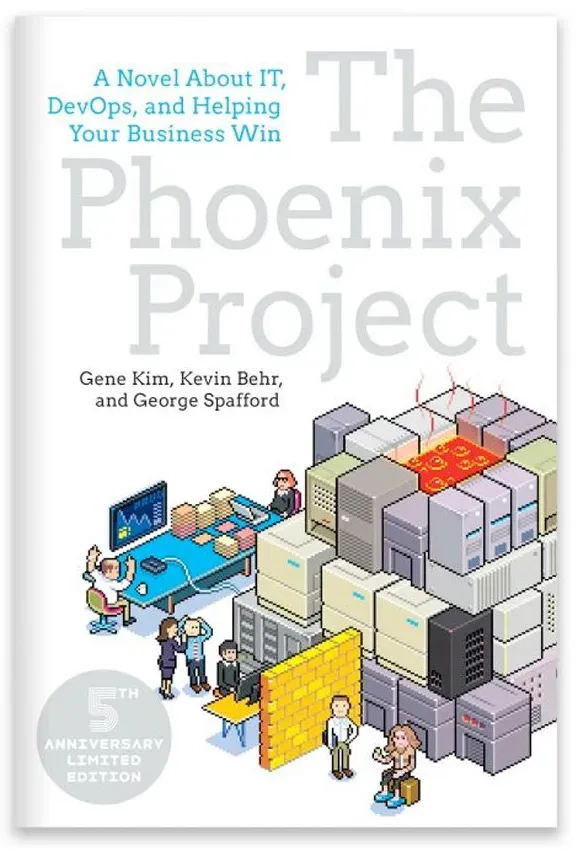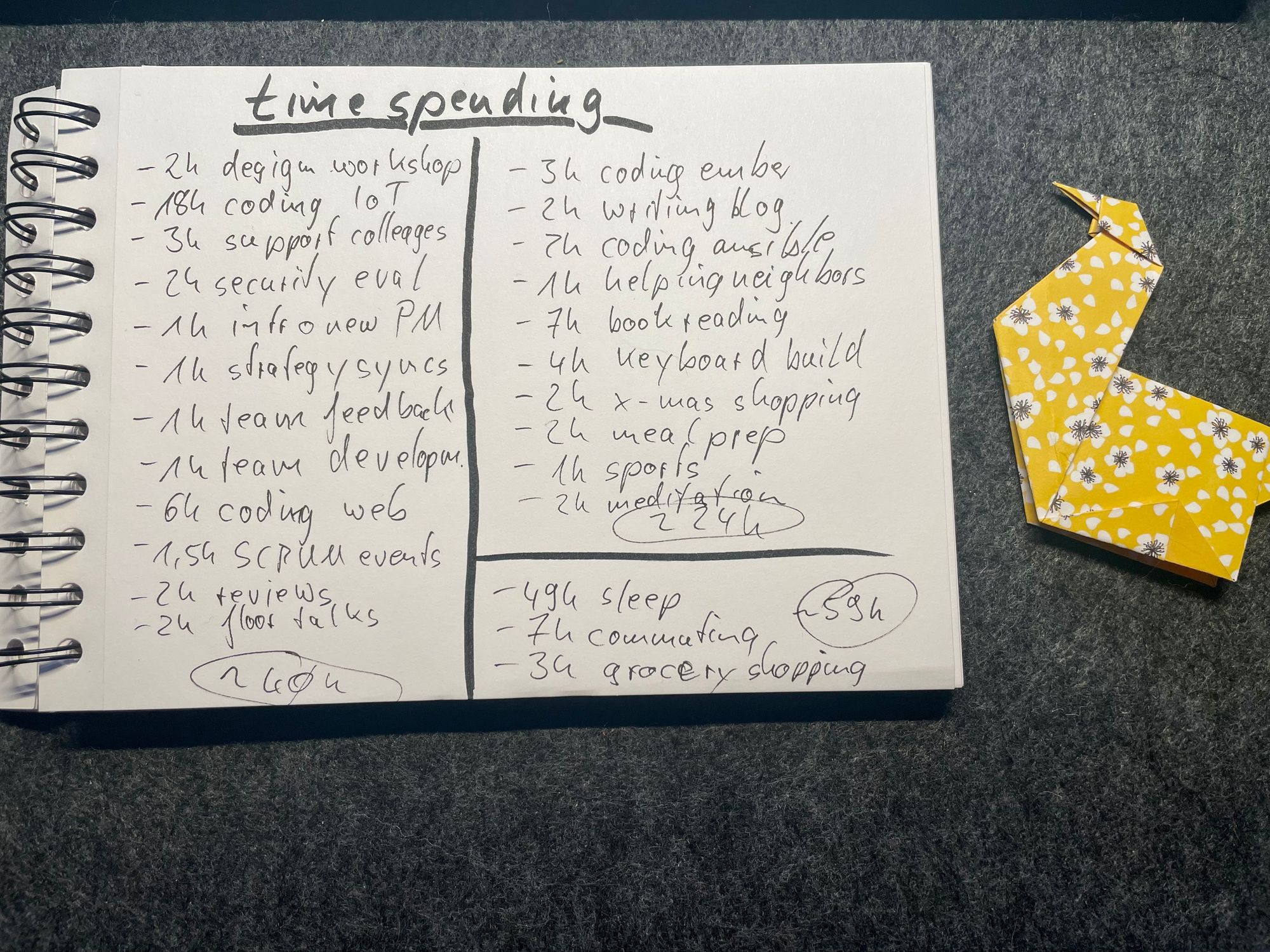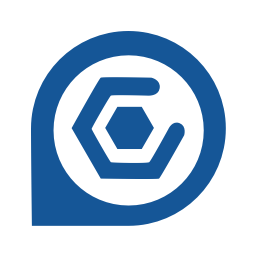DevOps - 4 Types of Work
The last DevOps article was in September. So, it might be time for more DevOps stuff. Don't you think so? Let's have a look at different work types, that one needs to understand establishing a DevOps culture, either for your own work or your company.

The last DevOps article was in September. So, it might be time for more DevOps stuff. Don't you think so? Let's have a look at different work types, that one needs to understand establishing a DevOps culture, either for your own work or your company.
This also seems to be the perfect article for a new year. Therefore, "Happy New Year!" and have a nice start in 2023.
Origin of this knowledge
The first time I heard about the below four types of work was in "The Phoenix Project" a novel about DevOps, co-authored by Gene Kim. It is discussing ideas of DevOps, proposing changes and metrics and also explaining methods and strategies to work from a paralyzed IT workflows to an agile, DevOps centric company.

The main character Bill works for Parts Unlimited, a company selling car parts and maintaining several shops where you can bring your car for repair or spare parts. The company is on the edge of collapse, and we can see how it slowly evolves.
I was able to identify with the characters in the book. Sometimes it was like looking back on some of my prior work places. I also learned a lot, about myself, changes and how one can tackle certain problems. It was so entertaining and meaningful to me, that I also bought other books from the authors like "The Unicorn Project", "Accelerate" or "The DevOps Handbook".
Four types of work
Before going into details, you may want to remember the last work week. Take a deep breath and think about, "Where have I invested my time?".
Exercise
You may take a pen and paper and scribble down the topics you were working on or review your calendar. Just answer the question: "How much time have I spent on which topic?"
For me, this looks something like this:

This is not exactly what I have done, but a good enough representation. A quick calculation 7*24-40-24-59=45 reveals, there are still 45h missing. But this is not important for the exercise. For now, I will focus on working hours, only.
After doing this, you may start reading the below and categorize your work. This allows you to get a gist of "where your work is going" and if this was a good decision.
Business Work/Projects
This work is basically everything that directly impacts your business model. You may think of a new release, talking to a customer or fixing a bug. It is basically everything your customers are screaming for and what helps your business to grow.
To pull in our usual example of a tomato processing plant, you might think of tomato processing, inventing new products like tomato paste or finding a new kind of tomato or vendor. But this also includes selling your processed products and getting them to the shop.
I think, most of you will agree that this work is the most critical one.
Optimizing the flow here may take time, but can make a huge impact. Just consider that unproductive meetings are gone, and you will spend 1h less per week in a meeting. This will result in ~50 hours per year. Most meetings are between 3–5 people. So, we will have ~200 hours per year, which are also 25 working days that can be used for improving your tomato processing business. And this is just one hour per week.
Internal Work/Projects
This is the work that needs to be done to enhance processes, business development, reducing technical debt or updating your own workstation. But it is also the setup of the new datacenter, development environment or buying new chairs and tables.
In a tomato processing company, this might be things like machine maintenance, buying new storage solutions or improving the workflow for finding new recipes.
This work is also essential, but is often delegated to other departments, that consume an unknown amount of time or resources. In addition, people will get involved for agreements, endless meetings and committee work.
You may reduce the amount of work here, by making it more transparent and owned by the people that need to work with the results.
Operational Work/Change
Operational work or routine work is everything you must do to get things (the above two) done. It is planning, testing, assessing, but also monitoring the deployment.
Writing a security guideline for the network team, setting up Change Boards and reporting to them or having SCRUM events is counted here, too. In a tomato processing plant, this might be stuff like hygiene, changing clothes, but also the regular security training.
Reducing the amount of operational work can be done with automation in many cases. Do you really need to test things manually? Can your release process become easier? Do you really need to discuss each and every change, or only irreversible/critical changes?
Unplanned Work
This is the most distracting work that can come up. You may think of, "Do you have 2 minutes?" Slack messages or "We need to make a hotfix, now!" situations. But, this is also a customer calling, requesting your support. Furthermore, this also includes the always on Mail client, noisy offices, the last ping of your smartphone and short-term meetings.
The problem here is, you are most likely busy with one of the above or even trying to improve the work for one of these. There are many studies that are discussing this situation. Some of them are linked below.



On average, 50%+ of workers are saying that they are distracted at work. Considering that each interruption takes 20+ minutes to get back to a task, you might stop interrupting each other with "super urgent tasks" or because "it's faster to ask someone".
It's unbelievable how valuable "Flow time" is and how much can be done when focusing on certain tasks for a dedicated amount of time. You might be the hero of the moment when answering everybody in time and attending every meeting. But, you can become invaluable by doing work that has a real impact on your business.
Core and Context
Since you have already done the above exercise, you might have a look at "DevOps - Core and Context Work" again and review your work in this regard.
This and "DevOps - The three ways" are giving some more context to the above and might help you to optimize your work time.
Conclusion
That's already it about this topic. Remembering the four types of work helped me a lot in the past to either revamp my schedule. Focusing on the important topics and mitigating distractions, unplanned work and too much operational overhead had a huge effect on me.
It's not the way, that I am not distracted anymore. But, if I really want to work on something, I will block my calendar, stop all distraction sources (chat, mail, smartphone, noises) and just move on with the task.
And let's be honest, isn't it the most satisfying thing in the world to get something done that really helps somebody?








